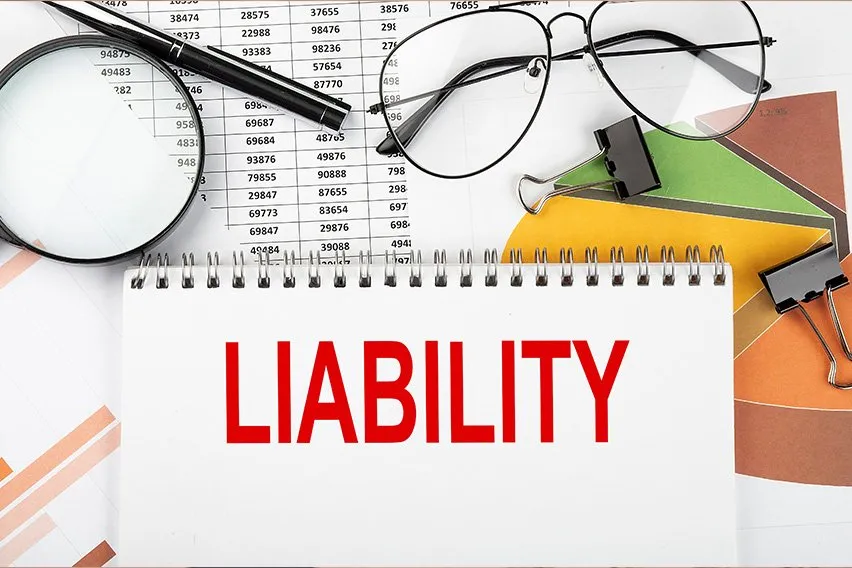Business Budget: How to Create It in 6 Simple Steps

A business budget is a document that provides an overview of a company’s predicted expenses and revenues for a given period. This helps the business estimate its potential profit and create short and long-term financial health strategies.
Having a good business budget is key to maintaining smooth cash flow, managing expenses, and preparing for any unexpected costs. It’s also helpful for demonstrating to investors that money is being spent effectively.
We’ll explore how to create a business budget and its importance to running a company. We’ll also look at a business budget example and different types of budgets to help you find the right financial budget for your small business.
Key Takeaways
- A business budget breaks down costs, revenue, and expected profits for a given period.
- Business budgets usually include fixed and variable costs, revenue sources, and profit.
- Having a business budget helps track expenses and ensure smooth cash flow.
- Different types of business budgets include labor budgets, capital budgets, and master budgets.
- Accounting software makes it easy to generate and track a business budget.
Table of Contents
- What Is a Business Budget?
- Why Is a Business Budget Important?
- How To Create A Business Budget
- Business Budget Example
- Types of Business Budget
- Use Your Business Budget to Stay on Track
What Is a Business Budget?
A business budget is a breakdown of business costs based on income for a given period. It helps a company plan out all its expenses to ensure there is sufficient cash flow to cover costs.
A good business budget will identify a company’s available funds and provide an overview of how that money will be spent. It will also estimate how much revenue the business is likely to generate over the given period.
A business budget usually covers revenue, business expenses, and other spending like growth and investment strategies. Most business budgets are created for a one-year period, though it’s common to also create shorter and longer-term budgets.

Why Is a Business Budget Important?
Business budgeting is essential for several reasons, including:
- Planning any fixed and variable expenses
- Preparing for unexpected costs
- Setting revenue targets and projections
- Helping develop business strategy
- Providing investors with a financial overview
A business budget is important because it outlines a company’s anticipated expenses, allowing them to compare their costs to revenues. It also allows businesses to build a contingency for unexpected costs so they’re not left trying to address issues at the last minute.
Business budgets aren’t just for planning costs—they’re also valuable for setting sales goals and revenue projections. This helps small business owners create strategies to meet these income targets.
In addition to supporting the business’s financial strategy, a good budget also makes a company more appealing to investors. It allows them to review how the company intends to spend their money so they know it will be applied effectively.
How To Create A Business Budget
These six steps provide a simple framework for establishing an effective business budget:
1. Analyze Your Revenue
A key component of your business budget is understanding all your revenue streams. This allows you to predict how much revenue your business is likely to earn from each income stream.
Some revenue sources may be fairly predictable—for example, if your company has fixed investments and savings accounts, you can predict the amount of income with relative accuracy. Other types of investment income, such as capital gains may be more variable.
There are also several ways to forecast income from sales. You can analyze historical data that calculates how much your business made in the past and use that to estimate future income. You can also examine seasonal trends to help prepare for highs and lows in your business revenue. Data from recurring customers can also help you identify trends in your income.
2. Identify Fixed Costs
Some business expenses are fixed costs, meaning the business pays the same amount each billing period. You can identify fixed costs by reviewing your financial statements to find consistent recurring payments.
Some examples of fixed costs include:
- Internet and phone bills
- Set fees for bank accounts and credit cards
- Employee salaries
- Rent and mortgage payments
- Website hosting
- Software and accounting services
- Insurance
Some expenses, like utility bills, may not be exactly the same amount every month. However, they’re usually predictable within a narrow range, so they can be included in your fixed-cost calculations.
Deduct fixed costs from your revenue in your business budget. Tracking fixed costs is also helpful for adding up tax deductions at the end of the year.
3. Identify Variable Costs
Variable costs are expenses that change with every billing period. This can be due to internal factors like employees working more hours or external factors such as the rising cost of production materials.
Some examples of variable costs include:
- Hourly wages
- Production materials
- Commissions
- Equipment repairs
- Travel expenses and fuel costs
You can identify many variable costs by looking through your previous financial statements to find regular purchases with fluctuating amounts. Although it’s more difficult to predict future variable costs, creating a broad estimate helps you budget for these expenses.
4. Create a Contingency Fund
An effective budget should also include room for unexpected expenses. This contingency fund reserves a percentage of your company’s business budget set aside to deal with emergencies.
Reasons to use money from a contingency fund could include emergency equipment repairs or replacement, replacing spoiled or broken inventory, purchasing a new vehicle, or bringing on additional staff to deal with a busy period.
5. Estimate Your Profit
Profit estimates are calculated by deducting all expenses from your total projected revenue. Add up your fixed costs, variable costs, and contingency funds and subtract this total from your estimated income to estimate your profit.
If you find that your estimated profit is lower than you hope, you can now use your existing business budget to assess potential spaces to cut costs. You can also devise strategies to boost your revenue.
6. Finalize The Business Budget
Once you’ve completed your business budget and estimated your profit, it’s time to finalize the budget. Share it with team members and investors alongside financial strategy documents to present a comprehensive business plan.
It’s good practice to regularly monitor the business budget to ensure that real spending is in line with budgeted spending. Most businesses review their budget on a monthly basis, though many small businesses may also choose to do weekly reviews so they can make any necessary adjustments.
Business Budget Example
A basic small business budget template includes four columns of information: categories, budget amount, actual amount, and the difference between budgeted and actual cost.
You can divide your budget into total income and total expenses for a quick overview. Income and expenses are broken down into line items with a total at the bottom for each category. You can use these to subtract expenses from projected revenue for an estimated profit.
Here is an example for creating a business budget spreadsheet:
| Category | Budget Amount | Actual Amount | Difference |
| Income | |||
| Sales Revenue | |||
| Interest Income | |||
| Investment Income | |||
| Other Income | |||
| Total Income | |||
| Expenses | |||
| Accounting Services | |||
| Advertising | |||
| Bank Service Charges | |||
| Credit Card Fees | |||
| Delivery Charges | |||
| Deposits for Utilities | |||
| Estimated Taxes | |||
| Health Insurance | |||
| Hiring Costs | |||
| Installation / Repair of Equipment | |||
| Interest on Debt | |||
| Inventory Purchases | |||
| Legal Expenses | |||
| Licenses/Permits | |||
| Loan Payments | |||
| Office Supplies | |||
| Payroll | |||
| Payroll Taxes | |||
| Printing | |||
| Professional Fees | |||
| Rent/Lease Payments | |||
| Retirement Contributions | |||
| Subscriptions and Dues | |||
| Utilities and Telephone | |||
| Vehicle Expenses | |||
| Other | |||
| Total Expenses | |||
| Total Income Minus Total Expenses |
Types of Business Budget
There are multiple types of business budgets that a company can create. A business owner may choose to use some or all of the following budget types:
Master Budget
A master budget is a financial overview of all the budgets in a company. If a business has multiple departments and each creates its own budget, the master budget gathers these together into a single document.
Having a master budget template is especially helpful for large companies that need to coordinate the finances of all their departments. It can also be useful for smaller companies that have a few departments and want to create unique budgets for each section.
Operating Budget
The operating budget can be thought of as the ‘everyday’ budget for a business. This budget accounts for the necessary expenses a company uses to perform everyday operations.
An operating budget typically includes fixed and variable expenses and revenue. It doesn’t include other financial data like investments, marketing, or overhead administrative costs. The operating budget is one of the simplest budgets and allows the business to assess the direct costs needed to continue running smoothly.
Capital Budget
A capital budget assesses a business’s broader financial health and is an important document for demonstrating business success to potential investors and shareholders. The capital budget includes financial elements like equity, assets, and liabilities.
Businesses may use a capital budget to attract investors or consider other funding opportunities. It’s a valuable tool for tracking long-term financial health and stability and setting medium and long-term business goals.
Cash Budget or Cash Flow Budget
A cash flow budget tracks the real liquid assets of a company over a given period. This is key to ensuring that the business has enough accessible cash to cover any expenses.
The cash flow budget will include both incoming and outgoing cash. It’s important for ensuring the business doesn’t exceed its available cash. A cash flow budget also helps business owners create strategies for managing debt payments and ensuring a smooth cash flow.
Labor Budget
Business budgets aren’t just helpful for planning financial strategy—they’re also essential for ensuring a company has enough labor to meet its business goals. A labor budget helps the business create an adequate staffing plan and budget the required compensation for all its employees.
A labor budget should include the number of employees, number of hours, employee wages, and payroll costs. Labor budgets are important for all types of businesses, but are especially valuable for companies that have variable busy times and need to hire seasonal employees.
Static Budget
A static budget outlines all the fixed costs of a business. This includes costs like rent, software fees, and internet and phone bills.
A static budget enables a business to assess the efficacy of its sales. Since fixed costs are independent of sales volume, the static budget remains unimpacted by any changes in business strategy.

Use Your Business Budget to Stay on Track
A business budget outlines a company’s expenses, revenues, and profits to help track financial health and manage everyday operations. A good business budget includes a contingency fund to address any unexpected issues as well as the planned costs of doing business.
The right accounting tools make it easy to create different types of small business budgets. FreshBooks accounting software helps you track and categorize expenses, create budget spreadsheets, and analyze financial data to review your budget. Try FreshBooks free to get started generating a budget for your small business.
Reviewed by
Jami Gong is a Chartered Professional Account and Financial System Consultant. She holds a Masters Degree in Professional Accounting from the University of New South Wales. Her areas of expertise include accounting system and enterprise resource planning implementations, as well as accounting business process improvement and workflow design. Jami has collaborated with clients large and small in the technology, financial, and post-secondary fields.
RELATED ARTICLES


 What Is the Cost Recovery Method? With Definitions and Examples
What Is the Cost Recovery Method? With Definitions and Examples Job Costing: What It Is & How To Calculate It
Job Costing: What It Is & How To Calculate It Overhead Cost: Definition, Types, and Examples
Overhead Cost: Definition, Types, and Examples Small Business Accounting 101: A 10-Step Guide for Financial Success
Small Business Accounting 101: A 10-Step Guide for Financial Success How to Increase Profit Margins: Top 5 Ways to Increase Your Small Business’s Revenue
How to Increase Profit Margins: Top 5 Ways to Increase Your Small Business’s Revenue How To Calculate Liabilities: A Step-by-Step Guide with Formulas
How To Calculate Liabilities: A Step-by-Step Guide with Formulas